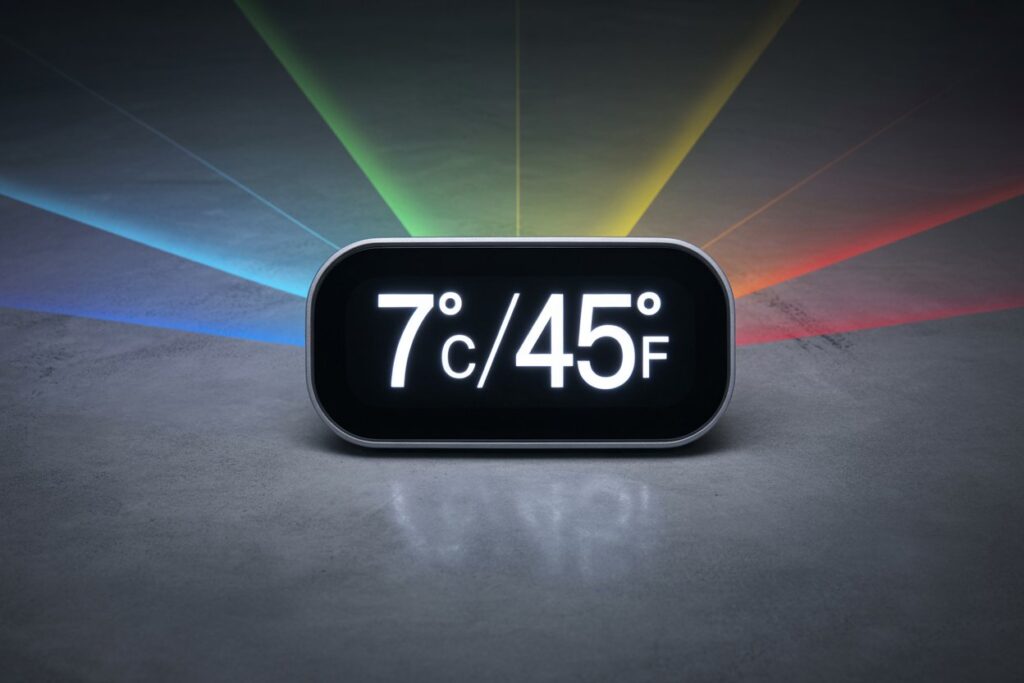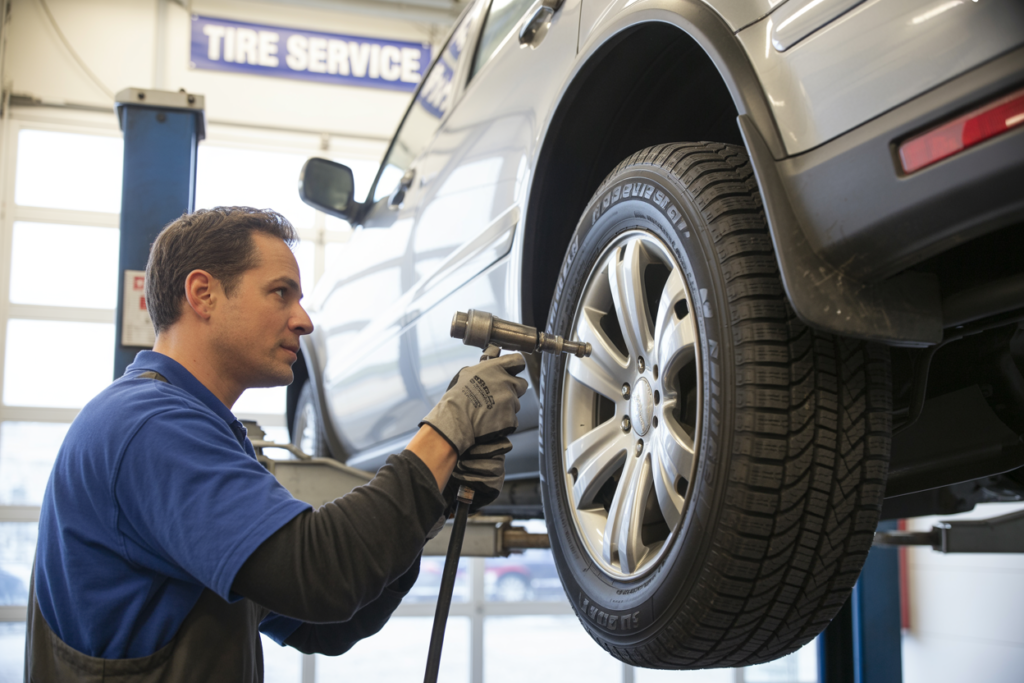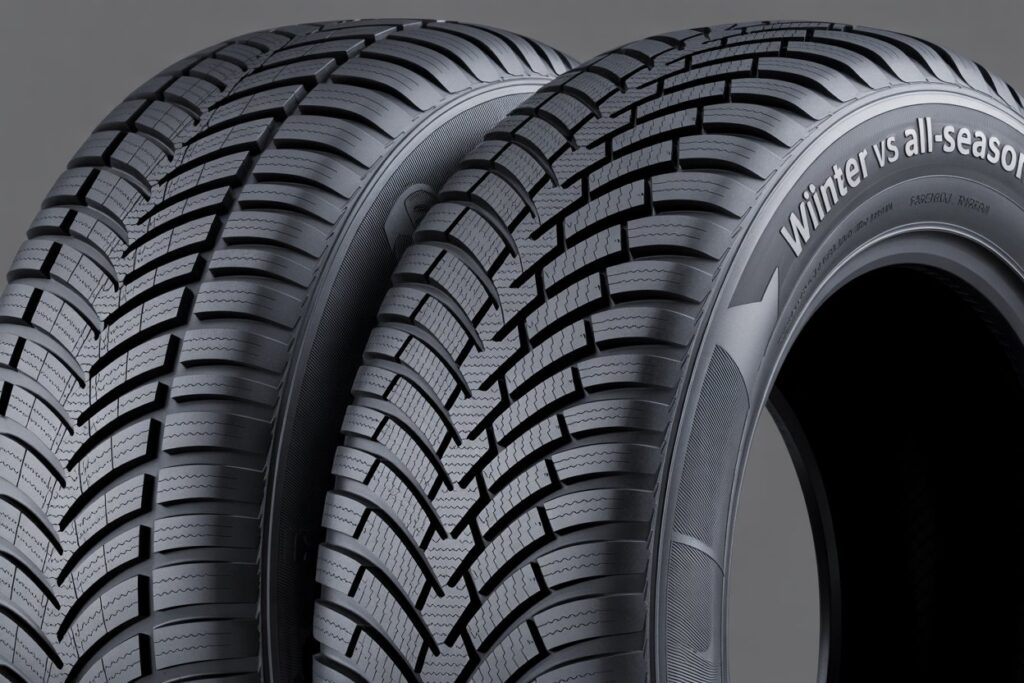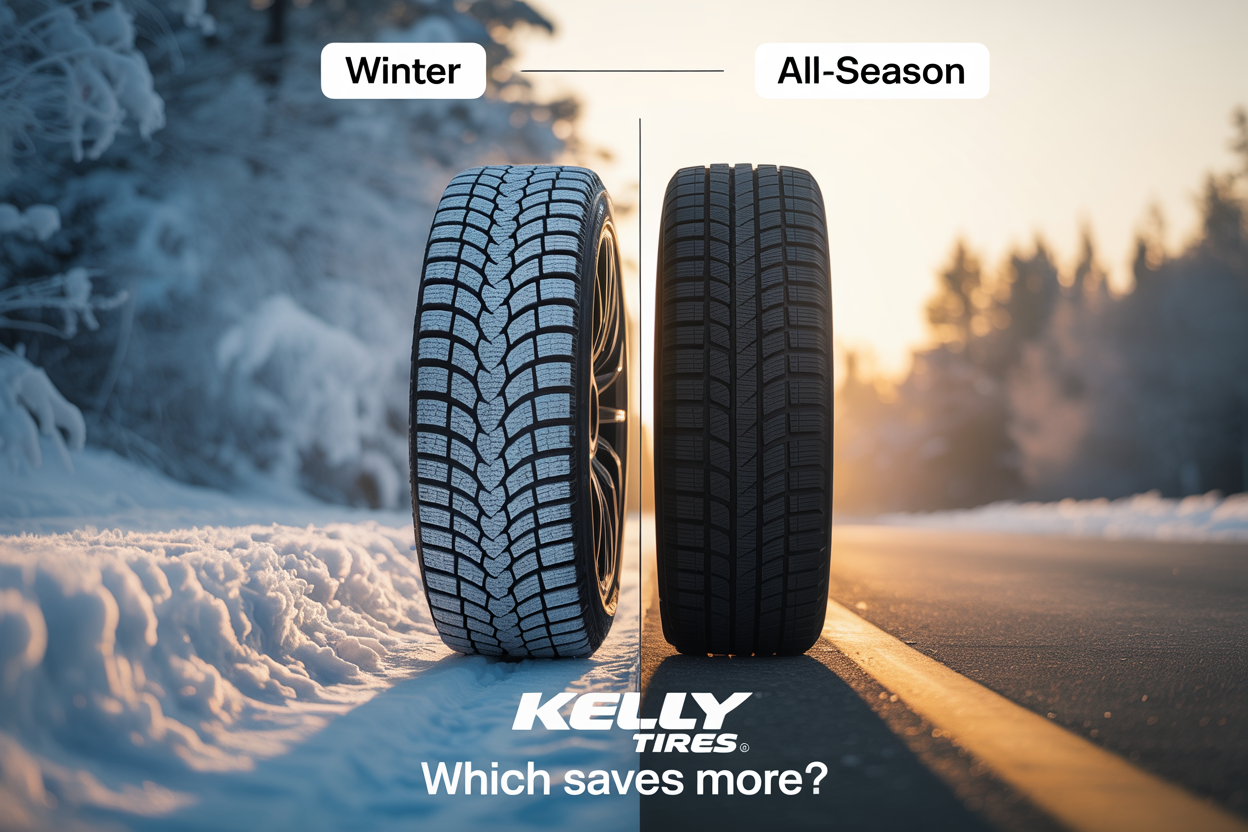Every fall, millions of drivers face the same expensive question: stick with all-season tires through winter, or invest in a dedicated set of winter tires? It’s a decision that impacts both your wallet and your safety, yet most drivers make this choice based on gut feeling rather than facts.
The debate often splits drivers into two camps. There are those who swear by winter tires, claiming they’re essential for cold-weather safety. Then there are the all-season advocates who see winter tires as an unnecessary expense, especially in regions with milder winters. Both sides have valid points, but the real answer isn’t one-size-fits-all.
What if you could calculate the true cost of each option over several years? Not just the sticker price, but the complete picture: installation fees, storage costs, wear rates, and even the potential cost of that one accident that better tires might have prevented.
In this guide, we’ll break down the real numbers behind winter versus all-season tires. You’ll discover which option actually saves money based on your specific driving patterns, local climate, and vehicle type. By the end, you’ll have a clear framework for making this decision—one that could save you hundreds of dollars over the next five years.
Understanding the Basics
Before diving into costs, it’s crucial to understand what you’re actually buying. Winter and all-season tires aren’t just different tread patterns—they’re fundamentally different technologies designed for different jobs.
Winter Tires: Built for Cold
Winter tires use a special rubber compound that stays flexible in freezing temperatures. Think of it like athletic shoes versus dress shoes—one bends easily while the other gets stiff. Below 45°F (7°C), regular tire rubber starts hardening like plastic, reducing grip. Winter tire rubber stays pliable, maintaining contact with the road.
The tread design is equally specialized. Those deep grooves and thousands of tiny slits (called sipes) bite into snow and channel away slush. The aggressive pattern that looks overkill on dry pavement is precisely engineered for winter conditions.
All-Season Tires: The Compromise
All-season tires attempt to handle everything from summer heat to light winter conditions. Their rubber compound is formulated to work across a wider temperature range, which means they’re never quite optimal for extremes. The tread pattern balances water evacuation for rain with some light snow capability.
Think of all-seasons as the Swiss Army knife of tires—decent at many things, excellent at none. They’re designed for convenience, not peak performance in any particular condition.
The 7°C/45°F Rule
Here’s the key fact many drivers miss: winter tire performance isn’t just about snow. Once temperatures consistently drop below 45°F, winter tires provide better grip than all-seasons even on dry pavement. This temperature threshold, not the first snowfall, should guide your tire decision.

Upfront Costs
Let’s start with the numbers everyone sees first: the purchase price. Understanding these initial costs is essential, but remember, they’re just part of the total equation.
Average Price Comparison
For a typical mid-size sedan, here’s what you can expect to pay for a set of four tires:
- All-Season Tires: $400-$800 for a decent set
- Winter Tires: $500-$900 for comparable quality
The price overlap might surprise you. While premium winter tires cost more than budget all-seasons, comparing similar quality levels shows only a 15-20% premium for winter rubber. For a $600 all-season set, expect to pay around $700 for equivalent winter tires.
Installation and Seasonal Swapping
Here’s where costs diverge. All-season drivers pay for installation once. Winter tire users face bi-annual mounting fees:
- Mounting and balancing: $60-$100 per swap (twice yearly)
- Annual switching cost: $120-$200
Over five years, that’s $600-$1,000 just in labor—nearly the cost of the tires themselves.

The Rim Question
Smart winter tire buyers invest in a second set of wheels. Yes, it’s a bigger upfront cost ($400-$800 for basic steel wheels), but it pays off quickly:
- Without extra rims: $120-$200 yearly in mounting fees
- With extra rims: $0-$50 yearly for simple wheel swaps (often free at tire retailers)
The break-even point? Usually 3-4 years. Plus, you can swap tires yourself or find free installation during promotional periods. This single decision can save $500+ over five years while protecting your expensive alloy wheels from winter salt and damage.
Hidden Costs of Each Option
The real expense of tire choices often lurks beneath the surface. These hidden costs can dwarf the initial purchase price, yet most drivers never factor them into their decision.
All-Season Hidden Costs
Running all-seasons through winter comes with risks that translate directly into dollars:
- Increased accident risk: Winter tires stop 30-40% shorter on ice. Even one fender-bender can mean a $500 deductible plus increased insurance premiums
- Accelerated wear: All-seasons wear faster in extreme temperatures. Driving them in summer heat after winter use can reduce lifespan by 20-30%
- Fuel economy: Hardened rubber in cold weather increases rolling resistance, costing an extra $50-$100 in fuel annually
- Stress and time: Longer commutes due to cautious winter driving, missed work days, and white-knuckle moments have real value
Winter Tire Hidden Costs
Dedicated winter tires bring their own set of expenses:
- Storage: $50-$100 per season at a tire shop, or the cost of garage/basement space
- Time investment: Two annual trips to the tire shop, typically 2-3 hours each including waiting
- Potential damage: Improper storage can ruin tires (UV exposure, moisture, stacking issues)
- Forgetfulness penalty: Running winters too long into spring accelerates wear dramatically

Wear Rate Reality
Here’s what manufacturers don’t advertise: using the wrong tire for conditions shortens its life. All-seasons driven year-round in harsh climates might last 40,000 miles instead of the rated 60,000. Meanwhile, winter tires used only in appropriate conditions can last 4-6 seasons, spreading their cost over more years than most drivers realize.
Real-World Scenarios
Numbers matter, but your specific situation matters more. Let’s examine four common driver profiles to see how the math actually works out.
City Driver with Mild Winters
- Profile: 10,000 miles/year, temperatures rarely below 30°F, plowed roads
- All-season verdict: Save $1,200 over 5 years
- Why: Minimal winter risk, good road maintenance, easy access to public transit during storms
Rural Commuter with Harsh Winters
- Profile: 20,000 miles/year, regular sub-zero temps, unplowed back roads
- Winter tire verdict: Save $800 over 5 years (including one avoided accident)
- Why: Safety critical, higher accident risk, wear offset by alternating sets

Weekend Driver
- Profile: 5,000 miles/year, flexible schedule, can avoid bad weather
- All-season verdict: Save $1,500 over 5 years
- Why: Low mileage doesn’t justify two sets, can stay home during storms
High-Mileage Driver
- Profile: 30,000+ miles/year, mixed conditions, reliability essential
- Winter tire verdict: Save $1,100 over 5 years
- Why: Alternating sets extends total tire life, reduced accident risk crucial for high exposure
The Break-Even Factors
Your personal break-even point depends on:
- Miles driven December through March: Over 5,000 miles favors winter tires
- Temperature consistency: Areas with fluctuating temps benefit more from dedicated sets
- Vehicle type: AWD doesn’t replace winter tires but reduces the all-season penalty
- Risk tolerance: Can you afford even one weather-related incident?
The 5-Year Cost Breakdown
Here’s the complete financial picture over five years, comparing both options for an average driver (15,000 miles/year) in a moderate winter climate.

All-Season Only Strategy
| Cost Item | Total 5-Year Cost |
|---|---|
| Initial tire purchase | $600 |
| Replacement set (Year 3) | $650 |
| Installation (2 sets) | $160 |
| Increased fuel (winter) | $375 |
| Accident deductible risk* | $250 |
| Total | $2,035 |
*Statistically adjusted for 25% higher accident risk
Winter + All-Season Strategy
| Cost Item | Total 5-Year Cost |
|---|---|
| All-season tires | $600 |
| Winter tires | $700 |
| Extra steel wheels | $500 |
| Seasonal swaps (DIY) | $0 |
| Storage (home) | $0 |
| Total | $1,800 |
Key Insights
The dual-set approach actually costs $235 LESS over five years because:
- Each set lasts longer when used in appropriate conditions
- No replacement needed within the 5-year window
- Avoided accident risk and fuel savings offset initial investment
Insurance Considerations
Many drivers miss this: some insurance companies offer winter tire discounts:
- Typical discount: 2-5% on premiums
- Average savings: $40-$100 annually
- Requirements: Must install by December 1st, remove by April 30th
Over five years, this discount alone can offset $200-$500 of winter tire costs, tipping the scales even further in favor of dedicated winter tires.

